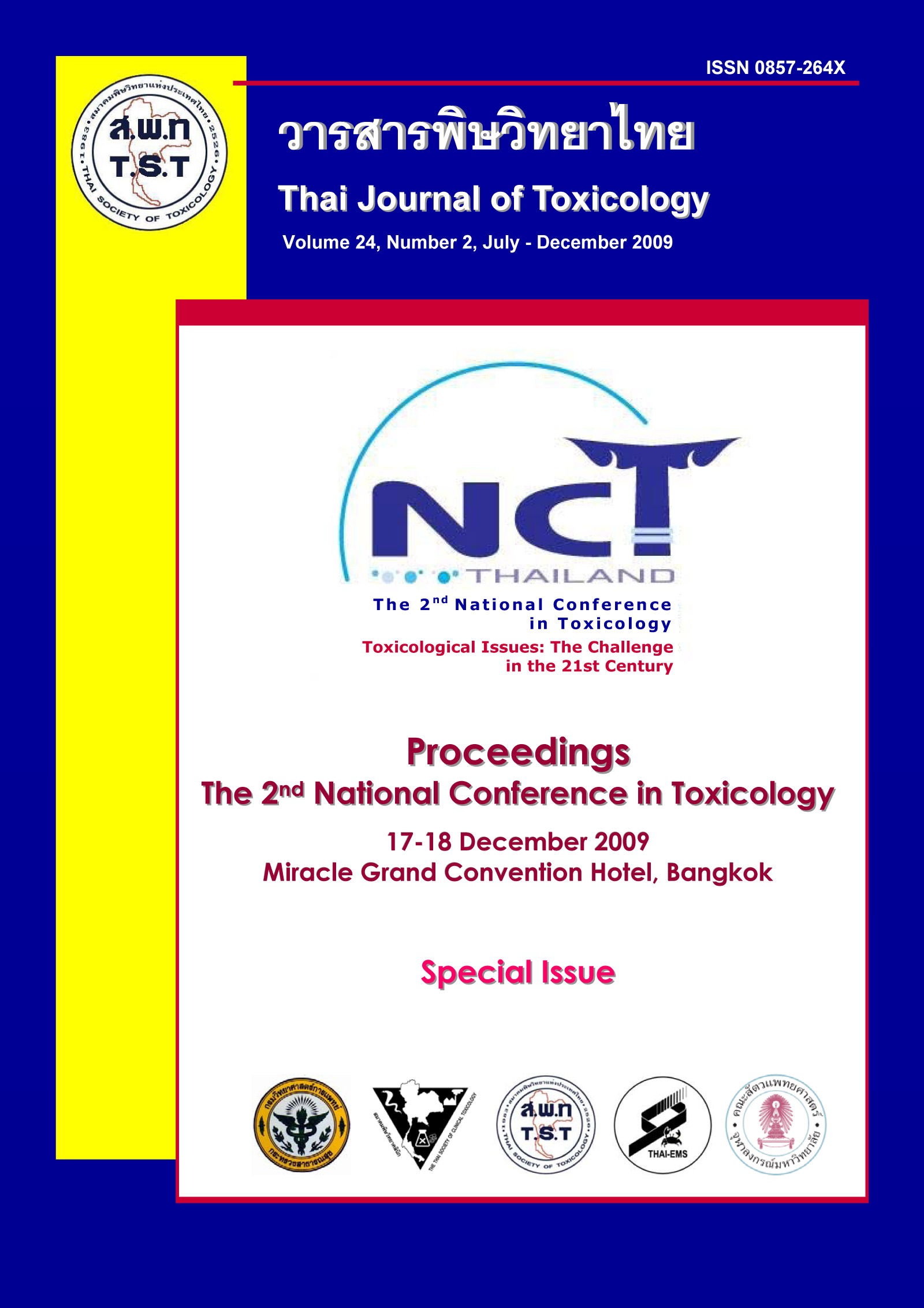Butylated Hydroxytoluene in Edible Vegetable Oils from Local Markets of Chiang Mai and Mae Hong Son and Its Thermal Stability in Different Cooking Conditions
Main Article Content
Abstract
Butylated hydroxytoluene (BHT) was widely used to protect oxidation and rancidity of food products containing fats and oils since it had high antioxidant activity. In this study, samples of edible vegetable oils from 25 local markets in Chiang Mai province and Mae Hong Son province were determined for BHT contents by gas chromatography-mass spectrometry (GC-MS). Of 18 vegetable oil samples, 3 palm oil samples from the local markets contained BHT in the range of 6.8-86.1 μg/g. The extracts of edible vegetable oil samples had 1,1-diphenyl-2-picrylhydrazyl (DPPH) radical scavenging activity in the range of 7.5 to 75.8% which had gallic acid equivalent and BHT equivalent concentrations in the ranges of 6.5 to 65.9 mg/g and 17.2 to173.0 mg/g, respectively. Three different home-cooking conditions were tested for thermal stability of BHT in the samples of palm oil. It was found that cooking temperatures at 98-100 °C by boiling or stir-frying for 1-15 min lost BHT 24-31% in the oil, while deep frying at 200±10 °C for 5- 15 min showed 46-62% loss of BHT.


